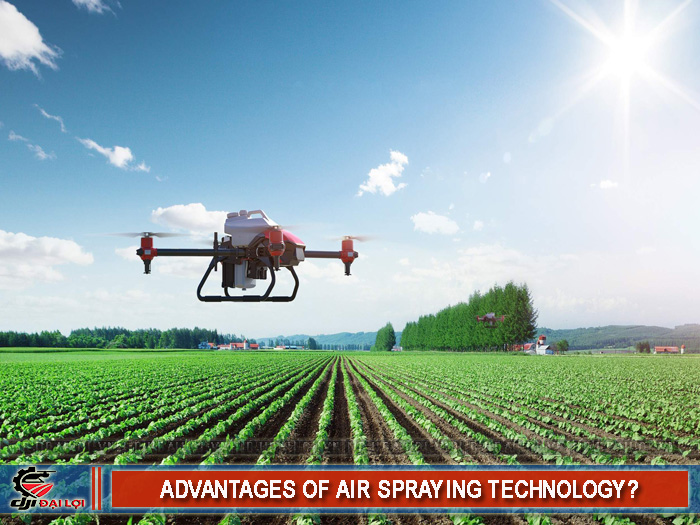
Over the past decade, drone spraying has become a symbol of high-tech agriculture, revolutionizing traditional crop protection practices. Vietnam is one of Southeast Asia’s leading countries in UAV adoption, particularly in rice and industrial crop production.
The rapid growth of drone models such as the DJI Agras series and local brands has helped farmers reduce costs, save time, and increase productivity. Pilot projects in Dong Thap, An Giang, and Lam Dong have shown 30–40% higher spraying efficiency compared to manual labor.
Agricultural drones use centrifugal or high-pressure spraying mechanisms. They are equipped with tanks, multi-directional radar sensors, and ultra-fine atomizing nozzles to ensure even chemical distribution.
Following pre-programmed flight paths via control software like DJI Terra or SmartFarm, drones maintain precise altitude, speed, and spray volume - optimizing coverage and reducing chemical waste.
UAVs enable farmers to spray at the right time during pest outbreaks, preventing disease spread. Collected aerial data also supports analysis of humidity, crop density, and yield potential, helping create a more accurate, synchronized, and sustainable farming process.
A single drone can spray 20–30 hectares per day - up to 30 times faster than manual spraying - dramatically cutting labor costs and work hours during pest outbreaks.
With RTK positioning, drones follow exact flight paths and deliver consistent droplet size, maximizing pesticide absorption and minimizing chemical residue.
Manual sprayers are exposed to over 80 chemical types, while drone operators stay 50–100 m away from the spray area, significantly lowering health risks.
Average spraying costs are only 40,000–50,000 VND/ha - 20–30% cheaper than manual methods. Reduced chemical loss leads to 10–15% higher yields.
Drones can operate over hills, swamps, and deep fields - environments difficult or unsafe for manual spraying - ensuring uniform coverage in challenging terrain.
Agricultural drones cost 150–400 million VND, plus maintenance for batteries, motors, and nozzles - a major barrier for smallholders.
Drone operation requires knowledge of flight software, calibration, and safety. Many farmers rely on rental services instead of self-operation.
Strong winds or high humidity can disrupt spray accuracy and coverage, making weather monitoring essential before each flight.
Vietnam’s Civil Aviation Law restricts flight zones and altitude. Drone operators must register and comply with safety protocols to avoid incidents near populated or electrical areas.
|
Criteria |
Drone spraying |
Manual spraying |
|---|---|---|
|
Spraying efficiency |
20–30 ha/day, uniform coverage |
1–2 ha/day, inconsistent |
|
Dosage accuracy |
Automatic adjustment with RTK sensors |
Dependent on user skill |
|
Long-term cost |
20–30% savings on chemicals and labor |
High waste and manpower costs |
|
Operator safety |
No direct chemical contact |
High exposure risk |
|
Environmental impact |
Reduced drift and pollution |
Higher risk of contamination |
|
Terrain adaptability |
Suitable for steep or flooded fields |
Limited access |
|
Skill requirements |
Requires pilot training |
Simple manual process |
Overall, drone spraying outperforms manual methods in efficiency, precision, and safety. Though initial costs are higher, it offers a long-term, economical, and sustainable agricultural solution.
In the Mekong Delta, drones shorten spray cycles and control major pests like rice leaf rollers. For coffee and pepper crops, yields have increased by 15–20%.
Cooperatives such as DJI Đại Lợi have invested in DJI Agras T30–T50 drones to provide large-scale spraying services, promoting sustainable mechanization.
Farmers in Long An and An Giang report 25% lower spraying costs and 30% less pesticide use while maintaining strong pest control - proving drones’ practical efficiency.
Choose 10–30 L capacity drones with 4–6 bar pressure. For instance, DJI Agras T10 suits small fields, while T50 fits large-scale operations.
Smart navigation software ensures precise GPS coordinates and avoids overlap. RTK positioning enhances accuracy through real-time adjustments.
Batteries are a major cost factor. Perform maintenance every 200 charge cycles and clean nozzles regularly to ensure consistent performance.
AI-powered systems analyze crop images, detect pest zones, and auto-adjust spray rates. DJI and Vietnamese manufacturers are expanding this innovation.
Next-gen drones will integrate temperature, humidity, and NDVI sensors for smarter pesticide scheduling and input optimization.
By 2030, Vietnam’s agricultural drone market is projected to reach USD 300 million, creating vast opportunities for agritech and precision-farming services.
Drone spraying saves time, cuts costs, and improves yields but requires proper training and equipment investment for maximum benefit.
Start through cooperatives or shared ownership to reduce costs. Choose drones with long-term technical support and warranty coverage.
UAV technology is a cornerstone of Vietnam’s agricultural modernization, offering not just economic benefits but also promoting green, safe, and data-driven farming.
Yes. Models like DJI Agras T10 and T20P are compact and ideal for fields of 0.5–2 ha.
Use water-soluble or liquid formulations. Avoid powder or oil-based chemicals that may clog nozzles.
After every 200–300 flight hours or 100–150 spray cycles, perform full maintenance on batteries, propellers, radar, and nozzles.
Yes, but basic training from suppliers is essential for safe, efficient operation and troubleshooting.
Very minimally. Fine droplet systems and precision control reduce chemical drift, protecting soil, water, and air quality.